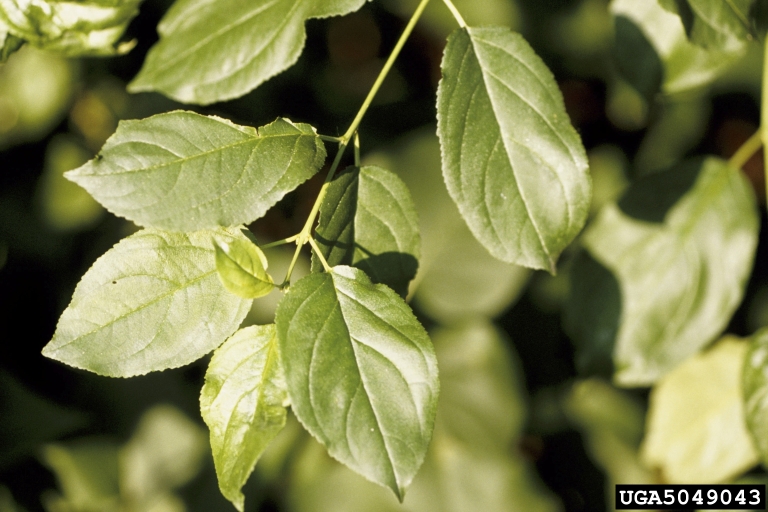
Photo credit: Joseph O’Brien, USDA Forest Service, bugwood.org
Are you looking for information on how to control buckthorn, honeysuckle or garlic mustard? The Invasive Plant Control Database from the Midwest Invasive Plant Network is a terrific resource for learning about the most effective chemical and non-chemical control methods for dozens of invasive plants in the Midwest.
Information was collected from both scientific literature and expert opinions and summarized by the Midwest Invasive Plant Network in partnership with the Mark Renz Lab at the University of Wisconsin-Madison. For each species, information was reviewed by four individuals, including two who identified as experts on control of that species.
Additionally, you have the option of entering personal experiences with managing specific species. These case studies become visible to all users once verified by Midwest Invasive Plant Network staff.
Under the search results for each species you will find:
- Plant identification information – Information on species identification, including photographs and a current distribution map.
- Ecological threats – Threats posed to natural ecosystems by this species.
- Case studies – Detailed successes (and failures) on how to control specific species contributed by experienced personnel.
- Control methods – Non-chemical and chemical control methods that fit the selected search criteria.
For example, by searching for “common buckthorn,” you can learn about the effectiveness of several non-chemical controls including mowing, prescribed burning, removal and manipulation of the environment (underplanting); the application of six chemicals with a variety of treatment types (pre-emergence, foliar, cut stump, hack-and-squirt and basal bark); and case studies from an individual who rents goats and a forestry department that tested glyphosate on small diameter buckthorn.
With 49 species in the database, we guarantee you’ll learn something new!
